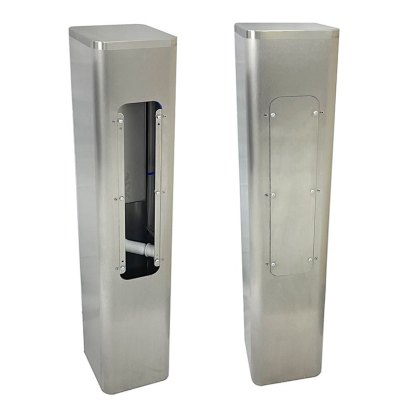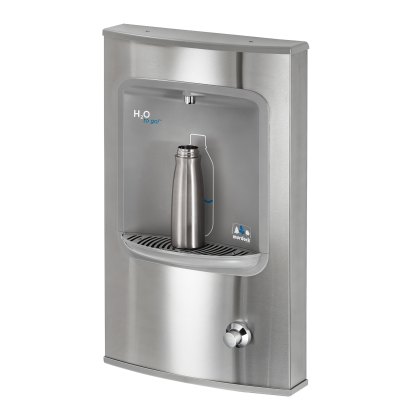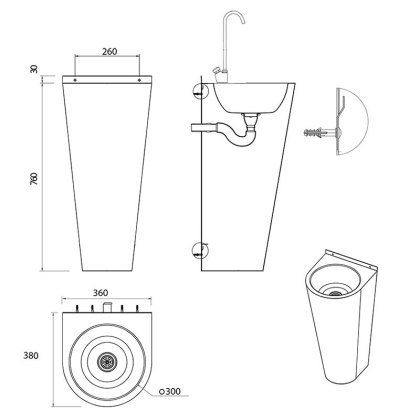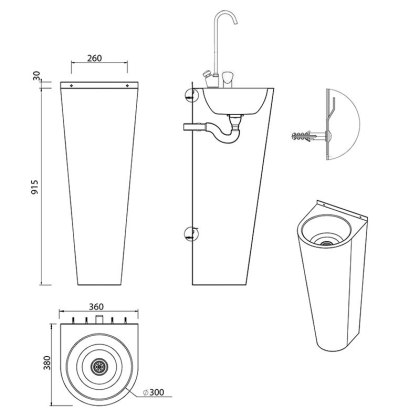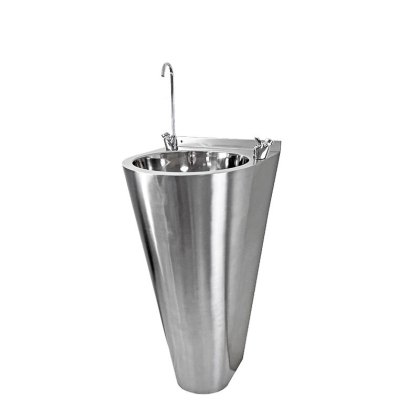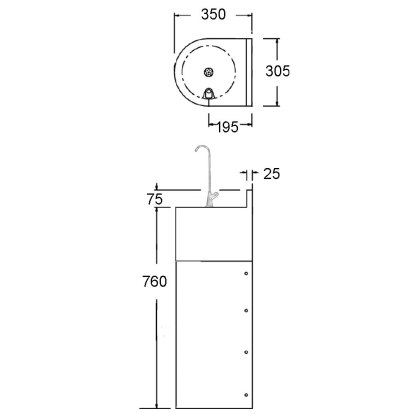Bottle Filling Units
Bottle Fillers – Refillable Water Stations for Schools, Workplaces & Public Spaces
Explore our range of high-quality bottle filler units, designed to provide safe, accessible, and eco-friendly hydration in busy environments such as schools, offices, gyms, and public buildings. Our bottle fillers encourage the use of reusable water bottles, helping to reduce single-use plastic waste while promoting good hydration habits. Choose from wall-mounted, recessed, or combined drinking fountain and bottle filler stations, all built for long-lasting performance and easy maintenance. Each unit meets UK regulations with the use of approved water fittings, making them an ideal solution for high-traffic areas where reliable and efficient water access is essential.
Choose your bottle filling fountain below

FAQs
Yes, our bottle fillers all have on / off valves and taps. An on?off valve only dispenses water while the user actively presses it. Once released, the flow stops immediately—eliminating waste. By contrast, time?flow valves continue running until a preset time elapses, which can lead to overfilling and unnecessary water use. This makes on?off models more efficient in high?use settings like schools, offices, sports venues and commercial area. 6 seconds extra running time on each bottle refill will waste 0.4 litres of water every bottle refill
Refillable bottles drastically reduce consumption of single-use plastic. Mains-fed bottle filling stations enable hydration at a cost of pennies per refill—an enormous saving compared to £0.50–£1.60 per bottled water sold. This supports sustainability and helps reduce plastic pollution.
WRAS / NSF Reg4 / Kiwa approval means components conform to UK water safety regulations. This ensures materials are safe, hygienic, and corrosion-resistant, protecting potable water quality. Using WRAS or equivalent approved fittings demonstrates compliance with UK health and plumbing standards. Make sure your bottle fillers have approved fittings.
Our bottle fillers are manufactured from grade 304 stainless steel with a minimum thickness of 1.2mm which is robust, vandal-resistant, and ideal for demanding commercial or institutional areas. All of our taps / valves and water pathway components hold WRAS or equivalent approvals to meet Water Board Regulations.
A Y-strainer filters out debris in the water supply before it reaches the internal components of the bottle filler. Installing a Y-strainer protects valves and pipework from blockages or damage—your warranty depends on proper installation.
Absolutely. These units are specifically designed for high-traffic environments like schools, offices and gyms. They encourage drinking tap water, reduce plastic waste, and help maintain hydration levels.
Maintenance includes regularly cleaning the stainless steel surfaces, sanitising the spoutand /recess area, and checking WRAS-approved components for wear. Filters and seals should be inspected periodically.
Yes. The open-recess design and elevated spout position make it easy to refill bottles of various shapes and sizes without tilting or awkward handling.
Refilling a standard 500 ml bottle costs only a fraction of a penny per fill. In contrast, retail bottled water costs from £0.450 to £1.60. This results in considerable savings for organizations and individuals over time. The cost savings to the planet need to be taken into account, and every plastic bottle saved from landfill is a successful outcome.
Yes units with elbow, forearm, push?button, foot-pedal activation are available to minimise cross-contamination and meet hygiene needs. These designs are ideal for busy or infection-sensitive environments.
Our pillar bottle filler, wall mounted, hand operated and wall recessed bottle fillers all have external WRAS approved on / off valves that can be easily used with your elbow or forearm to prevent cross contamination.
We also supply various foot operated bottle fillers to suit many budgets and applications.
Warranty Statement – Bottle Fillers and Drinking Fountains
This warranty applies to all bottle fillers and drinking fountains supplied by Washware Essentials Ltd.
1. Water Inlet Filtration Requirement.
No warranty shall apply to taps or valves unless a Y-strainer or suitable water filter has been installed on the water inlet pipes prior to use. The supplier reserves the right to request proof of such installation in the event of a warranty claim.
2. Warranty Period and Coverage
The supplier warrants that its products are free from manufacturing and material defects for a period of one (1) year from the date of purchase. This warranty is limited to defects arising under normal use and service conditions.
3. Repair or Replacement at Supplier’s Discretion
Where a valid warranty claim is made, the supplier will, at its sole discretion, either repair or replace the defective product or component. Replacement parts will be limited to the affected component. No guarantee is provided for on-site service or installation.
4. Valves and Taps – Specific Terms
In the event of faulty taps or valves, this warranty covers the supply of replacement cartridges, valves, or complete tap assemblies. Installation of replacement parts must be carried out by the original installer, building owner, or their appointed contractor. Labor costs for removal or re-installation are not covered.
5. Return for Repair
If repairs are deemed necessary by the supplier and cannot or will not be undertaken by the customer on site, the product must be returned to the supplier’s warehouse or designated service center at the customer’s expense. Return shipping or transportation costs are not covered under warranty.
6. Limitations and Exclusions
This warranty excludes damage caused by:
o Incorrect installation or failure to follow installation guidelines
o Water impurities, high-pressure damage, or the absence of proper filtration
o Misuse, abuse, vandalism, or neglect
o Normal wear and tear
The supplier shall not be liable for any indirect, incidental, or consequential damages, including but not limited to loss of use, loss of profits, labour for removal, replacement part fitting or re-installation, or costs of substitute equipment or facilities.
This warranty is offered in addition to any statutory rights available to the purchaser under applicable law. No other warranties, express or implied, are provided unless expressly stated in writing by the supplier.
Bottle Filling Units
Facts about water and hydration
Hydration and how much fluid we should be drinking is a much debated subject within the scientific community. When discussing ‘water’ it is usually understood that they mean nutrient water, which comes from both food and fluids. This obviously includes drinking water.
Poor hydration levels can lead to tiredness, headaches and poor concentration. Studies in schools have shown increased levels of awareness in pupils with access to water.
How much water should we drink?
The human body is almost two thirds water so proper hydration is very important to stay healthy. Individual water and fluid requirements can vary greatly. On a daily basis many factors can affect your need for water including age, size, gender, physical activity and climate. A good calculator for water intake requirements can be found at on the Hydration 4 Health website. Water intake calculator.
With water being the largest component of your body proper hydration is vital for your ongoing health and performance. Scientists agree that regular intake of water is required to maintain water balance and that water is an essential nutrient required for health.
The European Food Safety Authority (EFSA) recommends a daily water consumption of 2.5 litres for average males and 2.0 litres for average women, this can be achieved via food and drink sources. 70-80% of the daily intake of water should come from drinks, and the remaining 20-30% should come from food.
The British Nutrition Foundation gives guidelines on the benefits and downsides of different fluids, and water is the one they recommend as a great choice because it contains no sugar, additives or calories. Fluid intake information.
Despite large media campaigns research still shows we do not drink enough water.


